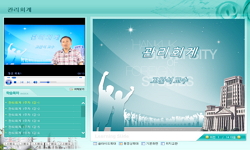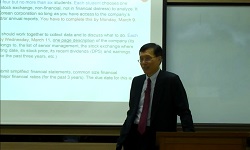Attraction effect that increased preference for target alternative when decoy alternative is added between two competitive alternatives can be easily found. However, not only the presented context but also consumer’s processing about the provided co...
http://chineseinput.net/에서 pinyin(병음)방식으로 중국어를 변환할 수 있습니다.
변환된 중국어를 복사하여 사용하시면 됩니다.
- 中文 을 입력하시려면 zhongwen을 입력하시고 space를누르시면됩니다.
- 北京 을 입력하시려면 beijing을 입력하시고 space를 누르시면 됩니다.

단계적 의사결정 방식에 따른 유인 효과의 변화 = Preference reversals in attraction effect on multistage decision making strategy
한글로보기https://www.riss.kr/link?id=A103657944
- 저자
- 발행기관
- 학술지명
- 권호사항
-
발행연도
2016
-
작성언어
Korean
- 주제어
-
등재정보
KCI등재
-
자료형태
학술저널
- 발행기관 URL
-
수록면
33-55(23쪽)
-
KCI 피인용횟수
1
- DOI식별코드
- 제공처
- 소장기관
-
0
상세조회 -
0
다운로드
부가정보
다국어 초록 (Multilingual Abstract)
Attraction effect that increased preference for target alternative when decoy alternative is added between two competitive alternatives can be easily found. However, not only the presented context but also consumer’s processing about the provided context have to be considered carefully because consumers sometimes evaluate alternatives with their own standards and it is possible that standard of selection is changed through additional information prior to purchasing. Therefore, this study will examine strengthened or mitigated attraction effect when attributes are processed through multistage decision making. Result of study 1 demonstrates that the selection of target alternative has declined, and selection of competitive alternative has increased when superior attribute information of target alternative is processed first. This is because shifting of focus to inferior attribute of target alternative after first stage of processing. On the contrary, when inferior attribute information of target is processed before superior attribute, selection of target alternative has increase and selection of competitive alternative has decrease as the result of shifting of focus to superior attribute of target. The Study 2 aims to examine whether it has the same results in price-quality trade-off situation. Result of study 2 shows that budgeting before choice diverts attention to quality, makes people have greater preference for high-quality and high-price alternative.
국문 초록 (Abstract)
경쟁하는 두 개의 대안 사이에 미끼 대안이 추가되었을 때, 표적 대안에 대한 선호가 증가하는 유인 효과는 일상적으로 쉽게 찾아볼 수 있다. 그러나 때때로 소비자는 자신의 내적 기준을 가...
경쟁하는 두 개의 대안 사이에 미끼 대안이 추가되었을 때, 표적 대안에 대한 선호가 증가하는 유인 효과는 일상적으로 쉽게 찾아볼 수 있다. 그러나 때때로 소비자는 자신의 내적 기준을 가지고 대안을 평가하기도 하며, 선택에 앞서 마주하는 정보가 선택의 기준을 바꾸기도 한다는 점에서, 대안이 제시되는 맥락뿐만 아니라 소비자가 주어진 맥락을 어떻게 해석 하는지 역시 중요하게 고려되어야 한다. 이에 본 연구는 단계적 의사결정 방식을 통해 특정한 속성을 먼저 처리하였을 때, 다른 속성으로 주의가 이동하여 유인 효과가 감소 혹은 증가하는 현상을 검증하고자 하였다. 이를 바탕으로 연구 1에서는 표적 대안의 우월 속성을 먼저 정보 처리하였을 때는 표적 대안의 열등 속성으로 주의가 이동하여 표적 대안의 선택은 감소하고, 경쟁 대안의 선택은 증가하는 것을 밝혔다. 또한, 반대로 표적 대안의 열등 속성을 먼저 처리하였을 때는 표적 대안의 우월 속성으로 주의가 이동하여 표적 대안의 선택은 증가하고, 경쟁 대안의 선택은 감소하는 것을 밝혔다. 연구 2에서는 가격-품질의 트레이드 오프 상황으로 확장하였을 때도 동일한 결과가 발생하는지 확인했다. 구체적으로, 선택에 앞서 예산을 설정하는 것은 품질에 대한 주의를 증가시켜, 고가격-고품질의 경쟁 대안으로 선호가 이행하는 것을 검증하였다. 본 연구의 결과는 기존 유인 효과의 연구를 단계적 정보처리의 관점으로 확장하고, 속성 프라이밍에 관한 선행 연구와는 달리 표적 대안의 열등 속성에 대한 정보처리를 이끄는 것이 실제 표적 대안의 선택 증가를 가져올 수 있다는 점에서 시사점을 지닌다.
참고문헌 (Reference)
1 손용석, "소비자사전지식과 유인대안의 위치가 유인효과에 미치는 영향에 관한 연구" 한국마케팅학회 25 (25): 17-34, 2010
2 이진용, "돈에 대한 생각과 정당화 요구가 소비자선택에 미치는 영향-타협효과와 유인효과를 중심으로" 한국소비자·광고심리학회 15 (15): 171-198, 2014
3 Baumeister, R. F., "Yielding to temptation : Self‐control failure, impulsive purchasing, and consumer behavior" 28 (28): 670-676, 2002
4 Hsee, C. K., "Will products look more attractive when presented separately or together?" 25 (25): 175-186, 1998
5 Khan, U., "When trade-offs matter : The effect of choice construal on context effects" 48 (48): 62-71, 2011
6 Larson, J. S., "When budgeting backfires : how self-imposed price restraints can increase spending" 49 (49): 218-230, 2012
7 Ge, X., "What to say when : influencing consumer choice by delaying the presentation of favorable information" 38 (38): 1004-1021, 2012
8 Moran, S., "Using context effects to increase a leader's advantage : What set of alternatives should be included in the comparison set?" 23 (23): 141-154, 2006
9 Bhargave, R., "Two-stage decisions increase preference for hedonic options" 130 : 123-135, 2015
10 Hedgcock, W., "Trade-off aversion as an explanation for the attraction effect : A functional magnetic resonance imaging study" 46 (46): 1-13, 2009
1 손용석, "소비자사전지식과 유인대안의 위치가 유인효과에 미치는 영향에 관한 연구" 한국마케팅학회 25 (25): 17-34, 2010
2 이진용, "돈에 대한 생각과 정당화 요구가 소비자선택에 미치는 영향-타협효과와 유인효과를 중심으로" 한국소비자·광고심리학회 15 (15): 171-198, 2014
3 Baumeister, R. F., "Yielding to temptation : Self‐control failure, impulsive purchasing, and consumer behavior" 28 (28): 670-676, 2002
4 Hsee, C. K., "Will products look more attractive when presented separately or together?" 25 (25): 175-186, 1998
5 Khan, U., "When trade-offs matter : The effect of choice construal on context effects" 48 (48): 62-71, 2011
6 Larson, J. S., "When budgeting backfires : how self-imposed price restraints can increase spending" 49 (49): 218-230, 2012
7 Ge, X., "What to say when : influencing consumer choice by delaying the presentation of favorable information" 38 (38): 1004-1021, 2012
8 Moran, S., "Using context effects to increase a leader's advantage : What set of alternatives should be included in the comparison set?" 23 (23): 141-154, 2006
9 Bhargave, R., "Two-stage decisions increase preference for hedonic options" 130 : 123-135, 2015
10 Hedgcock, W., "Trade-off aversion as an explanation for the attraction effect : A functional magnetic resonance imaging study" 46 (46): 1-13, 2009
11 Chakravarti, A., "The neglect of prescreening information" 43 (43): 642-653, 2006
12 Frederick, S., "The limits of attraction" 51 (51): 487-507, 2014
13 Dhar, R., "The effect of forced choice on choice" 40 (40): 146-160, 2003
14 Chernev, A., "The effect of common features on brand choice : Moderating role of attribute importance" 23 (23): 304-311, 1997
15 Slovic, P., "The construction of preference" 50 (50): 364-371, 1995
16 Parducci, A., "The category effect with rating scales : number of categories, number of stimuli, and method of presentation" 12 (12): 496-516, 1986
17 Boland, W. A., "The attribute carryover effect : What the"runner-up"option tells us about consumer choice processes" 38 (38): 872-885, 2012
18 김재휘, "The Effect of Denomination on Purchase Decision Making: Focusing on the Construal Level Theory" 한국소비자·광고심리학회 15 (15): 483-500, 2014
19 Ordóñez, L. D., "Testing the compatibility test : How instructions, accountability, and anticipated regret affect prechoice screening of options" 78 (78): 63-80, 1999
20 Diehl, K., "Smart agents : When lower search costs for quality information increase price sensitivity" 30 (30): 56-71, 2003
21 Heller, D., "Selection of strategies for narrowing choice options : Antecedents and consequences" 89 (89): 1194-1213, 2002
22 Krishnamurthy, P., "Resisting that triple-chocolate cake : Mental budgets and self-control" 37 (37): 68-79, 2010
23 Levin, I. P., "Prescreening of choice options in ‘positive’ and ‘negative’ decision making tasks" 14 (14): 279-293, 2001
24 Wright, P., "Phased decision strategies: Sequels to an initial screening" Graduate School of Business, Stanford University 1977
25 Hamilton, R., "Perceptual focus effects in choice" 34 (34): 187-199, 2007
26 Luce, R. D., "On the possible psychophysical laws" 66 (66): 81-95, 1959
27 Yang, S., "More evidence challenging the robustness and usefulness of the attraction effect" 51 (51): 508-513, 2014
28 Heath, C., "Mental budgeting and consumer decisions" 23 (23): 40-52, 1996
29 Huber, J., "Market boundaries and product choice : Illustrating attraction and substitution effects" 10 (10): 31-44, 1983
30 Gilbride, T. J., "Estimating heterogeneous EBA and economic screening rule choice models" 25 (25): 494-509, 2006
31 Tversky, A., "Elimination by aspects : A theory of choice" 79 (79): 281-299, 1972
32 Hsee, C. K., "Elastic justification : How unjustifiable factors influence judgments" 66 (66): 122-129, 1996
33 Bettman, J. R., "Effects of prior knowledge and experience and phase of the choice process on consumer decision processes : A protocol analysis" 7 (7): 234-248, 1980
34 Yan, D., "Effects of construal level on the price-quality relationship" 38 (38): 376-389, 2011
35 Pocheptsova, A., "Deciding without resources : Resource depletion and choice in context" 46 (46): 344-355, 2009
36 Slaughter, J. E., "Context effects on group-based employee selection decisions" 100 (100): 47-59, 2006
37 Bettman, J. R., "Constructive consumer choice processes" 25 (25): 187-217, 1998
38 Simonson, I., "Choice in context : Tradeoff contrast and extremeness aversion" 29 (29): 281-295, 1992
39 Simonson, I., "Choice based on reasons : The case of attraction and compromise effects" 16 (16): 158-174, 1989
40 Thaler, R. H., "Choice architecture. The Behavioral Foundations of Public Policy" 2014
41 Malkoc, S. A., "Between a rock and a hard place : The failure of the attraction effect among unattractive alternatives" 23 (23): 317-329, 2013
42 Mishra, S., "Antecedents of the attraction effect : An information-processing approach" 30 (30): 331-349, 1993
43 Epley, N., "Anchoring unbound" 20 (20): 20-24, 2010
44 Goldstone, R. L., "Altering object representations through category learning" 78 (78): 27-43, 2001
45 Huber, J., "Adding asymmetrically dominated alternatives : Violations of regularity and the similarity hypothesis" 9 (9): 90-98, 1982
46 Dhar, R., "A dual-system framework to understand preference construction processes in choice" 23 (23): 528-542, 2013
동일학술지(권/호) 다른 논문
-
사회적 기업의 제품 편익 프레이밍과 공익 활동의 시간적 거리가 광고태도 및 구매의도에 미치는 영향
- 한국소비자·광고심리학회
- 곽재필
- 2016
- KCI등재
-
How Do Consumers Respond to Shopping Environments?:Proposing the Theory of Shopping Congruence
- 한국소비자·광고심리학회
- 최은정
- 2016
- KCI등재
-
은유메시지가 수단의 유용성 인식에 미치는 영향: 단일 vs. 다중 목표 상황 비교를 중심으로
- 한국소비자·광고심리학회
- 박은영
- 2016
- KCI등재
-
식품 및 소비재에서의 무첨가 표기 마케팅의 후광효과(Halo Effect) 분석
- 한국소비자·광고심리학회
- 송미령
- 2016
- KCI등재
분석정보
인용정보 인용지수 설명보기
학술지 이력
| 연월일 | 이력구분 | 이력상세 | 등재구분 |
|---|---|---|---|
| 2027 | 평가예정 | 재인증평가 신청대상 (재인증) | |
| 2021-01-01 | 평가 | 등재학술지 유지 (재인증) |  |
| 2018-01-01 | 평가 | 등재학술지 유지 (등재유지) |  |
| 2015-01-01 | 평가 | 등재학술지 유지 (등재유지) |  |
| 2011-01-01 | 평가 | 등재학술지 유지 (등재유지) |  |
| 2009-01-01 | 평가 | 등재학술지 유지 (등재유지) |  |
| 2006-01-01 | 평가 | 등재학술지 선정 (등재후보2차) |  |
| 2005-05-30 | 학술지명변경 | 한글명 : 한국심리학회지: 소비자/광고 -> 한국심리학회지: 소비자·광고 |  |
| 2005-01-01 | 평가 | 등재후보 1차 PASS (등재후보1차) |  |
| 2003-01-01 | 평가 | 등재후보학술지 선정 (신규평가) |  |
학술지 인용정보
| 기준연도 | WOS-KCI 통합IF(2년) | KCIF(2년) | KCIF(3년) |
|---|---|---|---|
| 2016 | 1.23 | 1.23 | 1.38 |
| KCIF(4년) | KCIF(5년) | 중심성지수(3년) | 즉시성지수 |
| 1.28 | 1.35 | 2.111 | 0.15 |





 KCI
KCI







